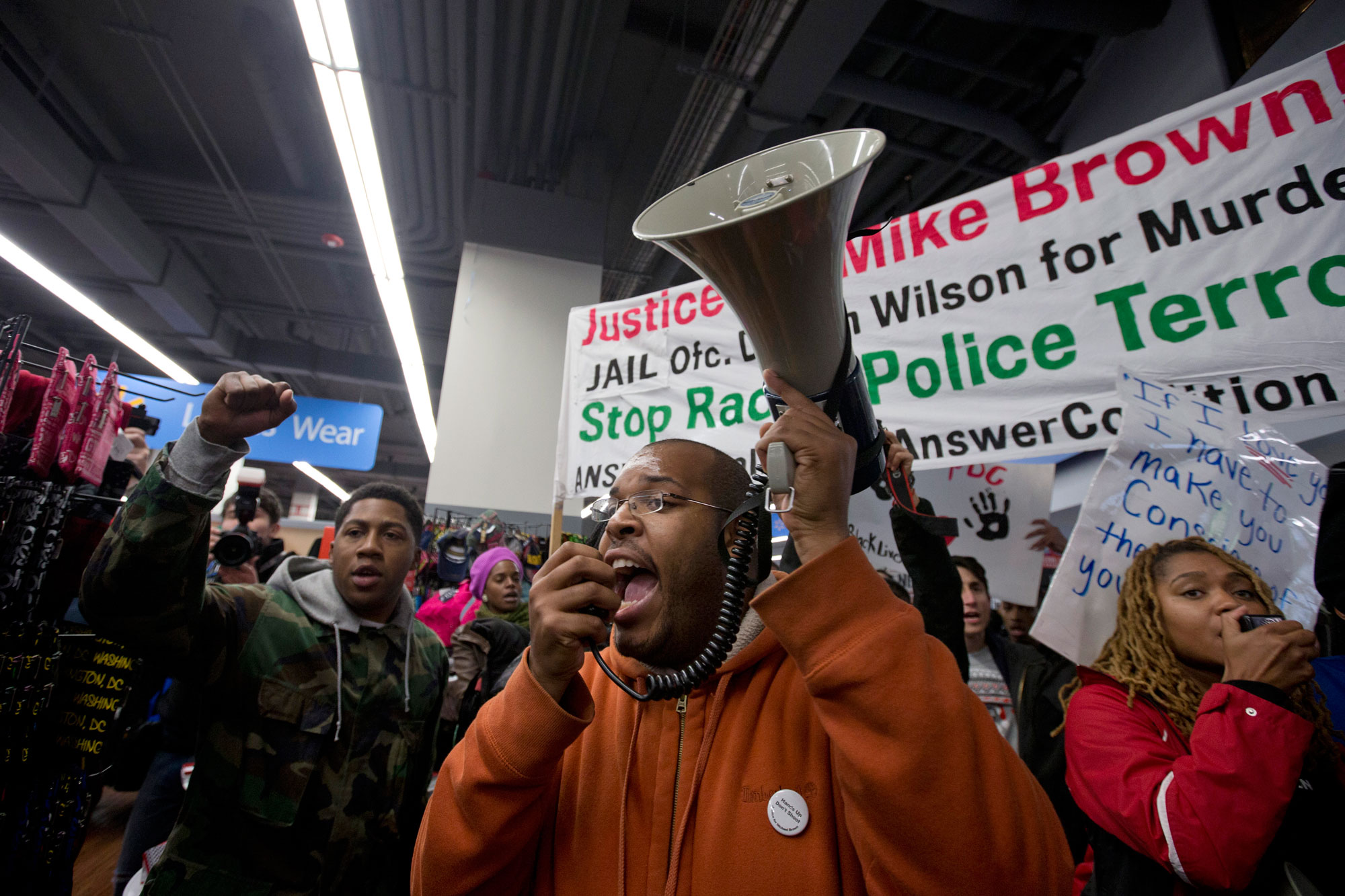According to Jennye Pagoada López, when she arrived on July 23 at the US-Mexico border, she was four months pregnant and bleeding. Seeking political asylum, Pagoada hoped to finally put an end to nearly 20 years of violence she and her family had suffered at the hands of the notorious gang Barrio 18—first in Honduras, then in El Salvador.
But instead of finding a new life in America, Pagoada was detained shortly after crossing the border and then sent to the Otay Mesa Detention Center in San Diego. Six days later, Pagoada says, she suffered a miscarriage, after being denied proper medical care. US Immigration and Customs Enforcement (ICE) claims she was never pregnant while in their custody.
The detention of pregnant women is a growing concern among immigrant rights groups. On September 26, a coalition of seven groups, including the American Civil Liberties Union and the Women’s Refugee Commission, filed a complaint with the Department of Homeland Security (DHS) regarding the treatment of pregnant immigrants. The complaint cites media reports that 292 pregnant women were detained by ICE in just the first four months of 2017, a 35 percent increase compared to the same period in 2016.
The signatories write that they are “gravely concerned” with the conditions reported by pregnant women detained across the country, and with “the lack of quality medical care” provided. “In several of the cases, there is concern that women are receiving inadequate and sub-standard medical care during and after miscarriage,” the complaint reads. “In every instance, the women express concern that the conditions of their detention and pressure of preparing for their legal cases in detention has had a harmful impact on their pregnancies.”
The groups argue that these detentions contradict ICE’s own policy. An August 2016 ICE memorandum authored by the current acting director of the agency, Thomas Homan, instructs that “pregnant women will generally not be detained” unless there are “extraordinary circumstances or the requirement of mandatory detention.”
***
When Pagoada turned herself in at the San Ysidro Port of Entry, she expected to be released in accordance with this policy. She was escorted to the border by Luis Guerra, a legal advocate with the United Farm Workers Foundation. Advocates say they have repeatedly witnessed Customs and Border Protection (CBP) telling immigrants that “political asylum doesn’t exist” and turning them away. As a result, immigrant rights groups were redoubling efforts to ensure that when people like Pagoada arrived, someone was present to help them obtain their legal right to claim asylum.
Guerra says that both he and Pagoada informed the CBP officers that she had a high-risk pregnancy and should receive immediate parole and access to medical care. Three days later, he learned that Pagoada was being held by ICE at Otay Mesa. Guerra and Allegra Love, an attorney with the Santa Fe Dreamers Project, asked that Pagoada be taken immediately to a hospital for prenatal treatment. She had continued complaining of vaginal bleeding as well as stomach and lower back pain. Love again cited the August 2016 ICE memorandum and said the facility was violating its own policy. “I sent the request to every officer who could possibly have influence on her case,” says Love. “I was ignored.”
Pagoada told her attorneys that on her sixth day at Otay Mesa the medical staff said she wasn’t pregnant. According to ICE spokeswoman Lauren Mack, “All of the appropriate protocols were followed and the medical tests did not support [Pagoada’s] claim that she was pregnant” while in the agency’s custody. Love disputes this assertion, noting that the test results were never communicated to counsel despite repeated instances of her and Guerra advocating for Pagoada’s prenatal care.
Pagoada’s case is among the ten included in the complaint filed with DHS, as are those of five women who were detained in the South Texas Family Residential Center (STFRC) in Dilley, Texas. Katy Murdza of the CARA Pro Bono Project has worked at STFRC as the advocacy coordinator for the past four months. Until recently, Murdza says, most pregnant women were released immediately at the border or within 24 hours, and would then receive a date to go before an immigration judge. This approach didn’t mean that the women got “a free pass to live in the US forever, or that they won asylum. It just meant they would go before an immigration court at a later date,” says Murdza. The majority of women who are released live with family or friends—a healthier environment than detention and also far less costly to taxpayers than detention.
In June, the Trump administration scrapped an Obama-era case management program offering alternatives to detention, which had a 99 percent compliance rate with immigration court appearances at a cost of about $36 a day per family. Since then, Murdza says, the number of pregnant immigrants detained at STFRC has risen. “Now we’re seeing about one pregnant person per day, and thirty since mid-August,” she says. “Almost none of these folks are paroled quickly anymore.”
Murdza describes pregnant women struggling with various kinds of stress and trauma in detention. Some are in the US because they are fleeing torture, abuse, or rape (and in some cases learn in detention that their rape resulted in pregnancy); some are trying to care for their children who are also struggling with detention and recent trauma; some have miscarried in the past due to stress or depression, and now fear a repeat due to their current circumstances; and there is little rest since detainees are sharing rooms with so many people, many of whom are sick.
Then there is an overlying stress for all pregnant asylum seekers: they face an interview to determine if they have a “credible fear” of returning to their birth country. Flunk that test, and they can be deported to the country that they just escaped.
***
Pagoada’s credible fear interview occurred one week after her miscarriage, according to Love and Guerra. They claim that at the time of the interview, she still hadn’t received proper medical care, was severely depressed, and had had only one visit from a counselor—to determine if she was suicidal.
According to Guerra, Pagoada experienced numerous traumas prior to seeking protection from the United States; they include multiple sexual abuses, one perpetrated when she was an adolescent living in Honduras by her stepfather who had ties to Barrio 18, according to Guerra. At that time, the family reported Pagoada’s stepfather to the police but he escaped custody. Shortly thereafter the death threats began, and a cousin who shared her surname was kidnapped and murdered. Pagaoda and her mother fled to El Salvador, while her brother remained behind and worked.
In El Salvador, Guerra says, Pagoada received phone calls extorting her to pay protection money or she and her brother would be killed. Late last year, her brother joined Pagoada and their mother in El Salvador. Within a few days of his arrival, members of Barrio 18 tortured him and mutilated his body. Pagoada and her mother were only able to identify him by a tattoo of the mother’s name. After fleeing for Mexico, they were still unable to escape violence. Staying at a shelter, Pagoada was assaulted by a man that they feared also had ties to the gang. When she learned she was pregnant, Pagoada decided to seek asylum in the US, hoping she would finally rid her and the baby she was expecting of the violence that had long plagued her.
But the asylum officer declined to find that Pagoada had a “positive credible fear” of returning to her birth country, and so she was scheduled for “removal.” Guerra believes that determination was due to the fact that Pagoada focused only on her most recent trauma—her brother’s murder—in the interview. With just one day until her deportation, Guerra and Love successfully obtained a second interview for her, saying that she had not been fit “medically, physically, or emotionally” for the first interview, and that she had not been able to tell her entire story. This time Pagoada talked about her life in Honduras, and the officer determined she had a “positive credible fear” of returning there.
Guerra and Love argue that the determination—along with the fact that she isn’t a flight risk and doesn’t pose a threat to public safety—again suggest that Pagoada should be released under ICE’s own guidelines. But nearly three months since she came to the country seeking asylum, Pagoada remains in detention. Pagoada says that she still needs medical care—she is suffering from depression, frequent headaches and vomiting, and numbness in her face. According to Guerra, as of October 1, she still hadn’t seen a doctor outside of Otay Mesa, despite repeated assurances that she would be able to do so. ICE maintains that like every detainee, Pagoada received a screening by medical staff to determine medical, dental, and mental health status within the first 12 hours of arrival into the detention facility; according to ICE, detainees are referred to off-site specialists as determined by their on-site primary care providers.
An ICE spokesperson says the August 2016 memorandum stipulating that pregnant women will not be detained absent extraordinary circumstances remains current policy. But advocates see evidence of a new, brutal era in immigration enforcement. “This is about the Trump Administration making it as hard as possible for immigrants to come here, even for pregnant women seeking political asylum,” says Love.
The Department of Homeland Security’s Inspector General and Officer for Civil Rights and Civil Liberties are responsible for investigating the complaint filed on behalf of Pagoada and the nine other women. Regardless of the outcome, for Pagoada that investigation is too little, too late.
This article was produced in partnership with The Nation.
Correction: An earlier version of this article referred to “Barrio 18” as “MS-18.”











